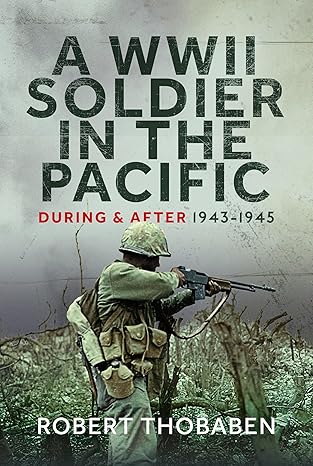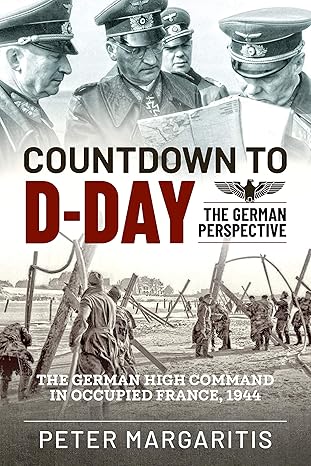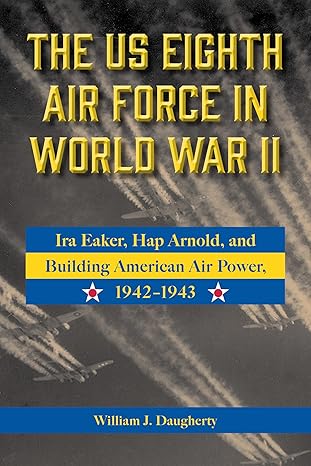Home / The War Nurses That Came Before Barton
The War Nurses That Came Before Barton
By James Hinton
The history of women in nursing and warfare is well known. Children throughout much of the English speaking world study the roles of Florence Nightingale and Clara Barton in most history classrooms, and a detailed study of their work is required in nearly every nursing program on both sides of the pond. These two women are held up as the ground breakers who brought women and nursing into the history of military medicine, and indeed, to the world as a whole.
However, the question is, did they really? In truth, the history of female nurses in warfare did not begin in the middle of the 19th century, but in fact goes back much further. Nightingale and Barton certainly deserve their places in the history books, but there are many other women who also deserve recognition as well.
In this article we will all too briefly explore the history of women, nursing, and warfare in the 19th century. Owing to constraints of both time and platform many deserving women won't receive mention here as the article focuses on a very Anglo-American history. It is hoped that the reader will use this not as the be-all and end-all of women in nursing, but in fact will view it simply as a launching point.
The American Revolution (1775-1783)
Though an 18th century war, the American Revolutionary War to win independence from England would set the stage and tone for much of the warfare of the 19th century. It is here, then that our examination will begin. Though few women gained fame throughout the war, they most certainly played important roles throughout the war, and served admirably on both sides.
Given how important history has made Florence Nightingale and Clara Barton out to be in terms of women and healthcare in the military, it would be understandable if people thought women had little role to play in this arena during the conflict that tore at the colonies for eight years. In fact, nothing could be further from the truth. The role of women in nursing on the battlefield was well established and formally documented.
The various camps of the Continental Army had large numbers of women attached to them. While the most common impression of the camp follower is that of a prostitute, in fact most of the women following the army were anything but “fallen”. Most of these women were the wives of soldiers ranging from the wives of privates ranging up to Martha Washington herself. These women often provided laundry and cooking services in exchange for payment out of the soldiers' pockets, earning their keep on the march. Often after battles ended these same women took up the chore of doctoring wounded soldiers.
Many officers frowned upon the presence of these women as unnecessarily complicating the movement of the army. Washington himself complained about them in 1777.
| The multitude of women in particular, especially those who are pregnant, or have children, are a clog upon every movement. The Commander in Chief earnestly recommends it to the officers to use every reasonable method in their power to get rid of all such as are not absolutely necessary. |
In spite of this complaint, the women were important enough that women serving as nurses were budgeted for by the Continental Congress. A resolution passed in 1775 officially established the payment for female nurses at two dollars a month. This would be doubled the following year, then doubled again in 1777, culminating in women serving as nurses with the Continental Army receiving eight dollars a month.
Though many women did step up and formally serve as nurses, it was never enough. Official orders and dispatches constantly called for the recruitment of more nurses. This effort was constantly hampered, however, by the pay. Even at eight dollars a month the pay was a fraction of the forty dollars a month that male doctors serving with these nurses received.
Despite being a war abroad in all but the most technical sense, the British Army during the American Revolution was no stranger to female nurses either. The official regulation rate for a female nurse was set at thirteen shillings a month. British Army nurses were typically drawn from among the wives of soldiers who had officially been sanctioned to follow along. Regulations permitted six wives to accompany every 100 soldiers, chosen by lot when the unit was dispatched. As many as 6,000 women could have officially followed the British Army, with many times that number tagging behind the army without sanction. While the majority would never have been recognized as (nor received the pay of) nurses, a significant number did.
http://www.history.org/history/teaching/enewsletter/volume7/nov08/women_revarmy.cfm
http://www.revwar75.com/library/hagist/britwomen.htm
Napoleonic Wars and 1812
The return of the British Army from their formal colonies in North America ended neither British warfare nor the role of women as nurses. Though the Napoleonic Wars didn't officially start until 1803, British soldiers were engaged in fighting the French only ten years after the Treaty of Paris ended the American Revolution. The rules regarding camp followers, including those paid as nurses, remained in play, and the British Army would continue to employ many women in this role.
The general attitude towards women serving as nurses for the troops was far warmer than popular history teaches us. William Fergusson rose to be the inspector-general of military hospitals during the extended fighting. On the subject of military nurses, he expressed a significant preference for women over men. Male nurses were, “a perversion, in some degree, of a man's nature, to make him a sick nurse; and the worst woman will generally make a better one, as being more handy and compassionate than an awkward clumsy man.”
The French used women as nurses to as great a degree as the British, as was true of most nations embroiled in what was very nearly a world war. French military units received stipends with which to hire vivandières. The primary purpose for these women was to provide wine and food service for the French soldiers. However, it was also widely recognized that they could and frequently would also act as nurses during and after battles. Owing to the performance of the French military during the wars from 1793 to 1815 many nations would model their militaries on that of France, and the vivandière would be part of that, seeing service in Spain, Italy, most German principalities, South America, and units on both sides of the American Civil War.
Though the Napoleonic War was fought primarily in Europe it was in many ways a global conflict, and women throughout the world were caught up in it. The War of 1812 is often treated as being a separate conflict from the Napoleonic Wars, but it cannot be understood without being seen against the context of that greater conflict. The urgent need of Britain to both blockade France and its allies, and to have the men for its navy needed to effect that blockade directly led to the war that broke out with the young United States.
The role of women as nurses during the war that was fought in North America can be illustrated by two women. Both of them took part in the failed attempts of the U.S.A. to conquer British Canada, and the two would come within only a few miles of one another.
When the U.S. Army fell back to Fort Erie in Upper Canada (Ontario) after the mostly indecisive (but strategically important) battle of Lundy's Lane, American Mary Ann Cole took over duties as a hospital matron. On the British side was Maria Hill. Initially a typical camp follower for the regiment her husband served in by the time of Ft. Erie she was the regimental surgeon's assistant. During the seven week long siege of the fort the two women would be part of the medical staff treating the 1,500+ men injured and killed.
Notable as the service of women like Mary Ann Cole and Maria Hill was, the thing that stands out during the Napoleonic Wars was the role of female nurses in the Navy. In the era of “Wooden Ships and Iron Men” it is commonly believed that women would almost never be allowed aboard ship, and certainly not in any other capacity than as a very brief passage. In actuality the evidence paints a very different picture.
In truth, when army units were transported aboard His Majesty's ships, the women allowed to accompany the units came aboard with the soldiers. During marine landings many of these women would remain aboard ship, running powder and water for the guns and the men, or assisting the ship's surgeon as nurses. Four such women are listed in the log book of H.M.S. Goliath in the aftermath of the Battle of the Nile. Sarah Bates, Ann Taylor, Elizabeth Moore, and Mary French were given rations for their roles as nurses following the deaths of their husbands in the battle. Similarly, Admiral Lord Keith ordered that those women who served aboard his ships as nurses during the landings at Aboukir Bay in 1801 receive rations out of the ships stores.
Britain was not unique in having female nurses aboard ship at this time. At the personal request of Commodore Stephen Decatur the U.S.S. United States had two female nurses aboard for several months of 1813, Mary Marshall and Mary Allen.
http://www.navyandmarine.org/ondeck/1800seawomen.htm
http://www.bbc.co.uk/history/british/empire_seapower/women_nelson_navy_01.shtml
http://www.womenhistoryblog.com/2014/07/first-women-nurses.html
South/Central American Wars of Independence (1790s-1850s)
Between the start of the Napoleonic Wars and the Mexican-American War most of South and Central America would gain independence from the various colonial powers. The largest contenders in these wars were Spain and Portugal in terms of land lost and troops employed. Both of these nations included vivandières, as part of their organization throughout this time period.
The forces of revolution also utilized women for the war effort. While far more open to allowing women to take on roles as active combatants than any of the European powers, many women chose to serve through the role of nurse. Though she became most famous for her role as Simón Bolívar's mistress, Manuela Sáenz acted as a nurse several times throughout Bolívar's career.
During both the Texas Revolution and the Mexican-American War the role of women as nurses was so well established in the Mexican Army most generals left medical planning out of their operational orders, knowing it would simply be taken care of by their camp followers, known as soldaderas. During the lead up to the Battle of the Alamo Santa Anna's forces were slowed significantly by the extensive number of soldaderas following his army. On the Texican side of that battle Juana Navarro Alsbury would be nurse for the ailing and soon-to-die James Bowie. After the battle Santa Anna would give her two pesos and release her from custody. Twenty years later she would be granted a pension by the State of Texas in recognition of her actions at the Alamo.
Crimean War (1853-1856)
Of course, it was the Crimean War that really brought women in nursing to the forefront of military history. Though Florence Nightingale certainly was far from the first female nurse to serve troops during war time, she deserves her place in the history books. She took the concept of women as nurses from the background and put it in the forefront of people's consciousness, starting with the British Secretary at War, Sidney Herbert.
Under the direct approval of Herbert, Nightingale sailed to the Crimean War with another 38 women, all of whom had been trained as nurses. Horrified by the terrible (but typical) conditions faced by wounded soldiers, Nightingale proved to have the personal traits needed to be not just a successful nurse, but to be an agent of change. She actively engaged with leading politicians and journalists of the time in a campaign to bring about numerous improvements to military field medicine, and got results. Among these results were the invention of prefab hospitals, mandatory sanitation standards, and an increase in medical supplies being provided to surgeons and nurses for the care of the wounded. Hospitals where she was able to apply these standards saw only a tenth of the death rate of other hospitals serving the army.
The British were not the only nation involved in the Crimea to employ female nurses. Although Nightingale was certainly the historical headliner of the war, the Russians also employed female nurses extensively. Nightingale's 38 nurses had more than 300 counterparts on the other side of the battlefield, and many, many more counterparts serving in military hospitals back in Russia. Though none of them have the name recognition of Nightingale, the Russian government awarded 7 gold medals and 1,450 medals to women who had served as nurses during the war.
http://rnjournal.com/journal-of-nursing/russian-nurses-after-the-crimean-war
American Civil War (1861-1865)
In North America, Clara Barton did for the U.S. Civil War what Nightingale had done for the Crimean War. In many ways her contribution was essentially the same as that of her British predecessor, but there were certain areas in which she was able to surpass Nightingale. While the female nurses in the Crimea were stationed far behind the lines, only caring for those wounded who had been successfully evacuated to full hospitals, Barton and her nurses had permission to work on the battlefields themselves.
Barton herself would work with field surgeons during several major battles in the U.S. Civil War starting with Cedar Mountain. At one point she would be tending to a wounded soldier directly on the battlefield only to have a bullet pass through the sleeve of her dress and kill the soldier. By 1864 she would be appointed by General Benjamin Butler as the head of the Army of the James' field hospitals.
Though famous, Barton was not alone in her service. Anne Bell would be placed in charge of two military hospitals in Nashville after serving on the front lines at Gettysburg. And even though Clara Barton is seen as the example of the female nurse in the Civil War, Dorothea Dix would be the woman assigned to be the Superintendent of Army Nurses.
Colonialism Related Wars (1880-1905)
Female nurses and warfare did not remain exclusive to Europe and the Americas. Throughout the post-Civil War period female nurses saw service in a number of wars in other locations.
Gold discoveries in southern Africa fueled an already existing desire in the U.K. for the consolidation of the region under British rule. The Boers, descendants of Dutch settlers, were less fond of the idea, which led to two wars, one in 1880-1881 and one in 1899-1902. Female nurses were present in both wars. The U.K. had formally allowed women to serve as nurses in the military with the establishment of the Naval Nursing Service in 1884. Renamed the Queen Alexandra's Royal Naval Nursing Corps, a number of these nurses were dispatched to provide aid during the First Boer War cared for the sick and wounded, while New Zealand sent a number of trained nurses to the Second.
For the United States, the formalized nursing system whose roots were planted by Clara Barton and Dorothea Dix was brought to bear during the Spanish-American War of 1898 and its immediate follow up, the Philippine War of 1899-1902. During these two conflicts 1,500 civilian nurses were contracted by the Army, seeing service in Hawaii, Cuba, Puerto Rico, Guam, and the Philippines, as well as serving stateside.
The Spanish-American War would lead to a very unfortunate distinction for female nurses. Ellen May Tower, a nurse working for the Army in Puerto Rico, became the first of twenty nurses to die on (what was then) foreign soil during this conflict. She had contracted typhoid fever only weeks after arriving.
One station of note for female nurses was the Relief. Originally built as a passenger ship it was purchased by the army, who converted it into a state of the art floating hospital. As many as twenty nurses at a time saw service in Cuba and the Philippines. The Relief would eventually be transferred to the Navy, but for a time the male-dominated Army was sailing a ship full of female civilian nurses.
Dr. Anita Newcomb McGee had been one of D.C.'s only female doctors when the Spanish-American War broke out. She immediately began training nurses to aid the military. Close to the end of the Spanish-American War she was placed in charge of the entire Army nursing program.
She would resign from this position in 1900, but her work was far from over. With the backing of Surgeon General Sternberg, Dr. McGee would write the legislation that would establish the Army Nursing Corp in 1901, the first program to admit female nurses into the U.S. military as uniformed members.
Not content with this, Dr. McGee would continue to impact the role of women as nurses in conflicts. When war broke out between Russia and Japan in 1904 McGee immediately departed for Japan. There she was appointed by the Japanese Minister of War as the Superior of Nurses and given the authority of an officer in the Japanese military. Initially she spent time training the Japanese Red Cross, but before the end of the war she had inspected and advised the Japanese military on nursing practices aboard the hospital ship Hakuai Maru, the prisoner of war camp in Matsuyama, and field hospitals in Korea and Manchuria.
Likely Dr. McGee would have encountered one of Japan's most unusual nurses during this time. Yamamoto Yaeko had started life as a woman of the Samurai class eight years before Commodore Perry forced Japan to open up trade with the West. When Japan collapsed into a period of civil war Yamamoto had served in the Aizu Army as an artillery gunner. Despite being on the losing side of those wars, she excelled after the war, eventually becoming a Red Cross Nurse. She would be decorated by the Japanese government for her service as a nurse during both the Sino-Japanese War (1894-1895) and the Russo-Japanese War.
The Japanese were not the only non-Westerners to employ women as nurses during this time period. When the Boxer Rebellion broke out in China in 1989 the Yihequan rebels (“Boxers”) employed women much like the South Americans had during their wars of independence. Broken into three divisions (Red Lanterns, Blue Lanterns, and Black Lanterns depending on age), numerous Boxer women provided nursing to wounded rebels during the two-year long conflict. 16 Red Cross nurses served during the conflict as well.
Europe's Wars
During this same era history was not done with Clara Barton, nor with Florence Nightingale. In 1870 France declared war on Prussia, one of the predecessors of Germany. The ensuing Franco-Prussian War lasted just under ten months and was an unmitigated disaster for France. It was also the time for the Red Cross to shine.
Nightingale did not choose to travel to the battlefields in France during this war. She was suffering from a particularly brutal case of brucellosis and was often bedridden. Her personal sympathies were with France, but both religious convictions and politics led her to do what she could to support nursing on both sides. She engaged in extensive correspondence with individuals from both nations providing both general and specific guidance regarding the needs for trained nursing staff and sanitary conditions in hospitals.
Barton, in contrast, did take a direct role in the war. After the Civil War she had spent time trying to help locate missing soldiers from the Civil War and lecturing on her experiences during the conflict. By 1868 she had become exhausted and was ordered by her doctor to spend some time far away from work.
For her, far away meant Switzerland.
The war broke out while Barton was in Switzerland. She had encountered the as of yet young and fairly untested Red Cross there during her vacation, and found herself intrigued by its principles and methods. When the war started Barton immediately left for Germany.
In Germany she worked closely with both the nobility and the military, establishing military hospitals and supervising work-relief programs for the destitute. Throughout this time she worked closely with the German Red Cross. These efforts earned her decorations from both Baden and Prussia as well as the admiration of the Red Cross.
Barton would return to the U.S.A. after the war with renewed vigor and purpose. She would spend the next decade campaigning for the creation of an American branch of the Red Cross, finally getting government sanction in 1881. Under her province the American Red Cross would lend humanitarian aid in a number of disasters throughout the 1880s. When the Red Cross sent nurses to Cuba during the Spanish American War, Barton went with them, actively serving as a nurse at the age of seventy-seven.
World War I
By the advent of World War I the role of female nurses in warfare had been well and truly cemented in the mind of the Western World. Following the examples of the British Navy and U.S. Army, the British Army had established the Queen Alexandra's Royal Army Nursing Corps in 1902, and the U.S. Army rounded the mix by establishing the Navy Nurse Corps in 1908.
When World War I broke out Army and Navy nurses were immediately available to provide aid to the soldiers and sailors deploying to fight. They would serve in all theaters of action, sometimes close enough to the front lines to become casualties themselves. One, Edith Cavell, would even be shot for helping Allied soldiers escape from German occupied Belgium.
Clara Barton would not live to see any of this. Both she and Florence Nightingale had died a few years prior to the 1914 start of WWI. Nightingale died peacefully in her sleep at the age of 90 in 1910. In 1912 Barton also died at 90 as a result of complications from Tuberculosis.
The death of Clara Barton did not represent the end of the first generation of female nurses to contribute to the survival of soldiers in a time of war. Even in the youthful United States female nurses had been receiving official pay for that task for nearly 50 years. Her life, and death, however, still deserve all of the recognition and accolades history has bestowed upon her. She wasn't history's first formal combat nurse, no. But with her death passed the first generation of nurses to be openly acknowledged and respected for their service to their countries. Together with Florence Nightingale, Clara Barton made it so.
| * * * |
© 2025 James Hinton
James Hinton is a former army aviation soldier and graduate from Boise State University. A military history nut, he spends his days boring his daughters to tears by rambling on at length about the obscure operational data of V1 rockets and his nights trying to figure out how to build a full scale replica of the Bismark in the back yard of his Idaho desert home.
* Views expressed by contributors are their own and do not necessarily represent those of MilitaryHistoryOnline.com.





























